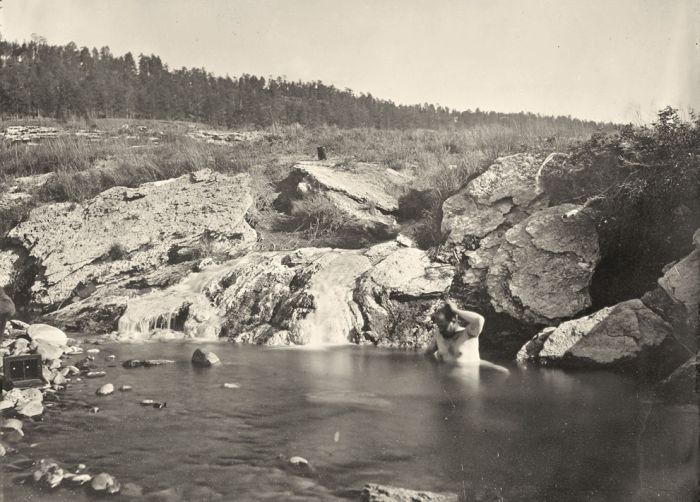|
|
History: American Old West, United States
|
As part of public policy, the government would award public land to certain groups such as veterans, through the use of "land script". The script traded in a financial market, often at below the $1.25 per acre minimum price set by law, which gave speculators, investors, and developers another way to acquired large tracts of land cheaply. Land policy became politicized by competing factions and interests, and the question of slavery on new lands was contentious. As a counter to land speculators, farmers formed "claims clubs" to enable them to buy larger tracts than the 160-acre (0.65 km2) allotments by trading among themselves at controlled prices.
The federal government also began to give away land for agricultural colleges, Indian reservations, public institutions, and the construction of railroads. It also gave away land when a territory became a state, and it gave each state 30,000 acres (120 km2) for each senator and representative.
In 1862, Congress passed three important bills that impacted the land system. The Homestead Act granted 160 acres (0.65 km2) to each settler who improved the land for five years, to citizens and non-citizens including squatters, for no more than modest filing fees. If a six months residency was complied with, the settler then had the option to buy the parcel at $1.25 per acre. The property could then be sold or mortgaged and neighboring land acquired if expansion was desired. Though the act was on the whole successful, the 160-acre (0.65 km2) size of parcels was not large enough for the needs of Western farmers and ranchers, and it failed to address the needs of the mining and timber operations as well.
Early on after the California Gold Rush, the federal government decided to leave the regulation of mining claims to local governments. This was reversed by later acts, which helped legitimate land acquisition for all purposes but which also made it easier for speculators and swindlers, especially in the timber and ranching industries. Given the necessity of water for ranching, squabbles over water rights ensued and complicated the situation. The railroads got much of the best land, and the land available to homesteaders was not always arable or commercially useful. On the whole, only about one-third of all Homestead Act claimants actually completed the process of obtaining title to their land.
|
|









